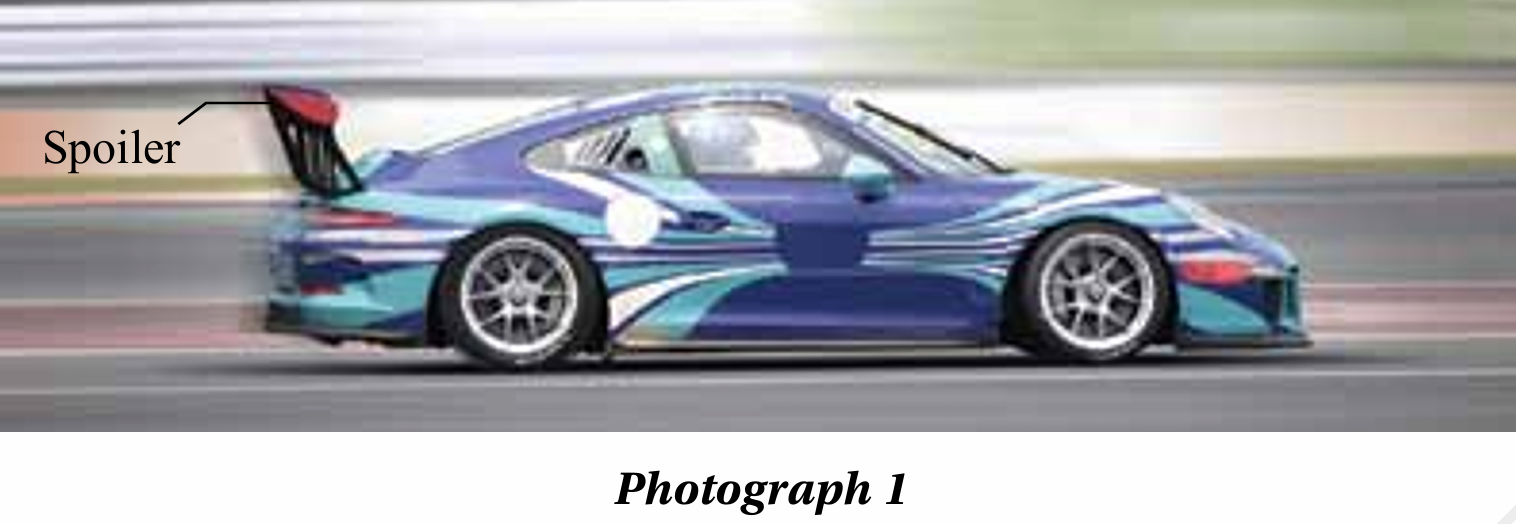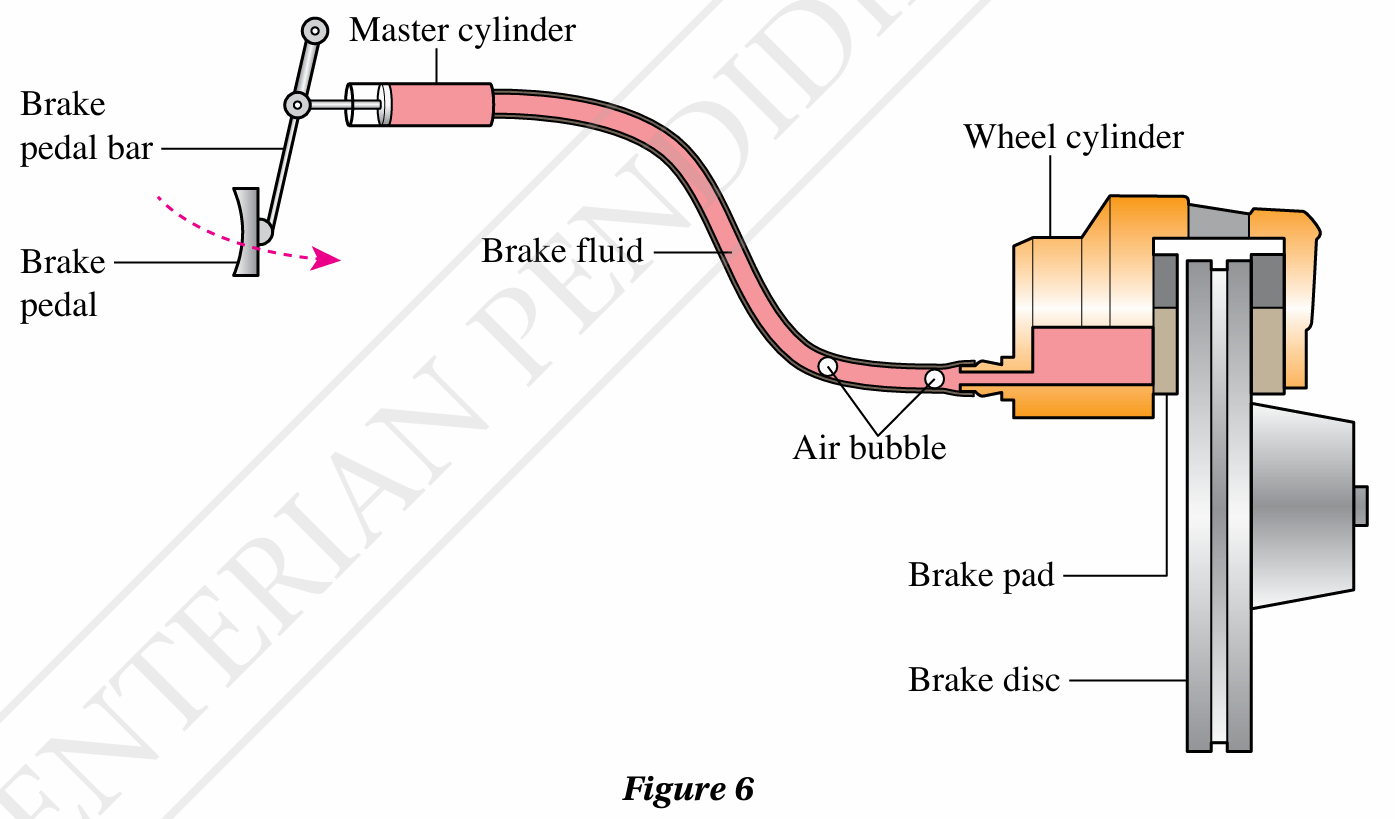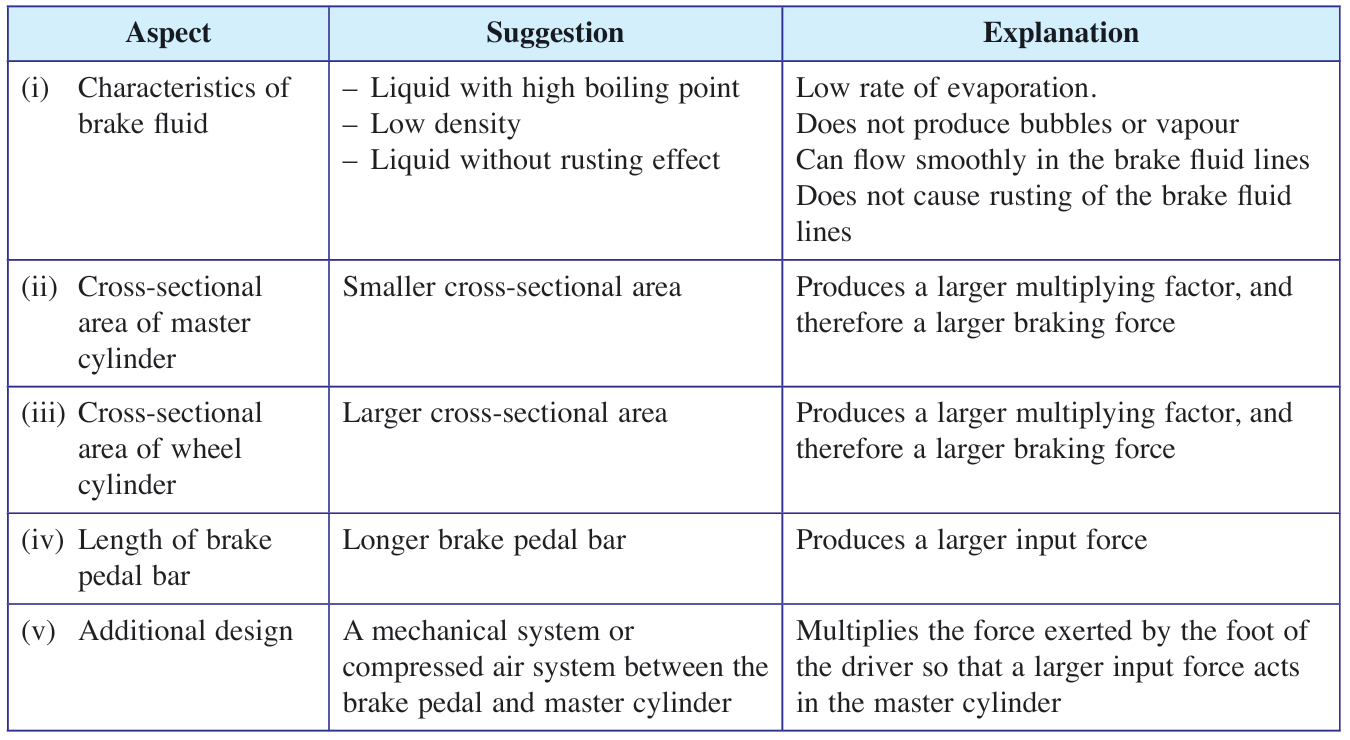Question 11:
Photograph 1 shows a racing car that is stabilised by downforce while being driven at high speed.

Explain the production of the downforce due to the air flowing past the:
(a) inverted aerofoil-shaped spoiler
(b) top and bottom sections of the car
Answer:
(a) Air flows at a lower velocity past the upper surface of the aerofoil to produce a region of high pressure.
Air flows at a higher velocity past the lower surface of the aerofoil to produce a region of low pressure.
The difference in pressure produces a resultant force downward.
(b)
Air flows at a lower velocity past the upper surface of the car, producing a region of high pressure.
The space between the bottom of the car and the road is narrow.
Air flows at a higher velocity past the narrow space, producing a region of low pressure.
The difference in pressure produces a resultant force downward.
Photograph 1 shows a racing car that is stabilised by downforce while being driven at high speed.

Explain the production of the downforce due to the air flowing past the:
(a) inverted aerofoil-shaped spoiler
(b) top and bottom sections of the car
Answer:
(a) Air flows at a lower velocity past the upper surface of the aerofoil to produce a region of high pressure.
Air flows at a higher velocity past the lower surface of the aerofoil to produce a region of low pressure.
The difference in pressure produces a resultant force downward.
(b)
Air flows at a lower velocity past the upper surface of the car, producing a region of high pressure.
The space between the bottom of the car and the road is narrow.
Air flows at a higher velocity past the narrow space, producing a region of low pressure.
The difference in pressure produces a resultant force downward.
Question 12:
Figure 6 shows part of the hydraulic brake system of a car. A driver finds that the brake has to be pressed harder and further in to stop the car.

(a) Identify the weaknesses in the hydraulic brake system of the car.
(b) By using suitable physics concepts, suggest modifications to the brake system so that the car can be stopped more effectively. Your answer should include the following aspects:
(i) characteristics of the brake fluid
(ii) cross-sectional area of the master cylinder
(iii) cross-sectional area of the wheel cylinder
(iv) length of the brake pedal bar
(v) other suitable designs
Answer:
(a)
Weaknesses of the braking system of the car
– Brake pedal bar that is short and almost vertical
Does not produce a large input force on the brake fluid in the master cylinder
– Air bubbles in the brake fluid
Air can be compressed. The movement of the piston in the master cylinder produces a very small movement of the piston in the wheel cylinder
– The cross-sectional area of the wheel cylinder is almost the same as the cross-sectional area of the master cylinder.
The multiplying factor is small. A large braking force cannot be produced.
(b) Suggested modifications:

Figure 6 shows part of the hydraulic brake system of a car. A driver finds that the brake has to be pressed harder and further in to stop the car.

(a) Identify the weaknesses in the hydraulic brake system of the car.
(b) By using suitable physics concepts, suggest modifications to the brake system so that the car can be stopped more effectively. Your answer should include the following aspects:
(i) characteristics of the brake fluid
(ii) cross-sectional area of the master cylinder
(iii) cross-sectional area of the wheel cylinder
(iv) length of the brake pedal bar
(v) other suitable designs
Answer:
(a)
Weaknesses of the braking system of the car
– Brake pedal bar that is short and almost vertical
Does not produce a large input force on the brake fluid in the master cylinder
– Air bubbles in the brake fluid
Air can be compressed. The movement of the piston in the master cylinder produces a very small movement of the piston in the wheel cylinder
– The cross-sectional area of the wheel cylinder is almost the same as the cross-sectional area of the master cylinder.
The multiplying factor is small. A large braking force cannot be produced.
(b) Suggested modifications:

